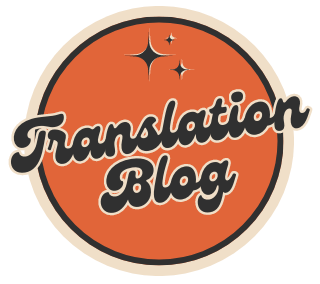Have you ever read a story that painted pictures in your mind? That’s the magic of figurative language. Writers use it to make their words more powerful, colourful and full of meaning.
Figurative language doesn’t always mean exactly what it says. Instead, it uses creative comparisons and expressions to showcase ideas in a deeper way. According to Grammarly, “A figure of speech is a tool that conveys meaning in a non-literal way by using creative language.”

You can find things like metaphors, similes, and personification in poems, plays and novels. These tools make writing more interesting and easier to connect with. So, you can enjoy it more once you learn how figurative language works.
It also helps you understand the writer’s message and improve your own writing. This guide explains to you everything about figurative language with excellent examples.
Key Highlights
- Figurative language uses creative expressions to make writing more vivid and emotional.
- It helps you say more with fewer words by creating strong mental images.
- Unlike literal language, figurative language adds depth and invites deeper thinking.
- Common types include simile, metaphor, personification, hyperbole, and symbolism.
- You often see figurative language in books, songs, poems, and daily conversations.
- It strengthens storytelling by building emotions, shaping characters, and enhancing the backdrop.
What Is Figurative Language?
Figurative language uses words in creative ways. It helps writers go beyond plain meanings to make their message stronger.
According to Merriam-Webster, figurative language definition is “Language that consists of or includes figures of speech such as metaphors and similes.” So, it’s not about what the words say, but what they mean.
You see this in stories, poems, and even everyday talk. For example, if someone says, “Time is flying,” they don’t mean it has wings. They just feel time is moving fast.
Figurative vs. Literal Language
Literal language says things exactly as they are. Figurative language needs you to think more.
- Literal: “It’s hot today.”
- Figurative: “It feels like a sauna outside.”
You can see the difference, as the second sentence creates a stronger image.
Therefore, figurative language invites you to imagine, feel, and connect. It makes basic writing into something more powerful. And you’ll see it everywhere in books, songs, and even your own thoughts once you start noticing it.
Figurative Language in Essay Writing
In essay writing, figurative language is useful but must be used with care. It can make complex ideas easier to understand through analogies and metaphors. For example, saying “Memory works like a filing cabinet” helps readers visualise how we store information.
However, many students struggle to use these expressions effectively in essays. Some students overuse it and make phrases unclear. That’s why most of them prefer to consult expert essay writing services like The Academic Papers UK. Their professionals know how to use figurative language that makes essays more engaging and winning.
Types of Figurative Language with Examples
Figurative language is one of the most powerful tools in literature. It helps writers express thoughts in a creative and emotional way. When you read a story filled with figurative expressions, it paints clear and colourful pictures in your mind.
Here are the most common types of figurative language with examples.
1: Metaphor
A metaphor compares two different things without using the words “like” or “as.” It helps describe something by saying it is something else. It creates strong images and adds depth to meaning.
For example: “All the world’s a stage.” Shakespeare. This shows how life is like a play. Everyone plays roles, and life moves in scenes. It adds a dramatic and thoughtful tone to the text.
Using a figurative language metaphor helps writers express complex feelings in simple ways.
2: Simile
A simile shows how two unlike things are alike by using words such as “like” or “as.” You’ve seen this in poems and stories many times. It makes descriptions clearer and easier to picture.
Example: “He fought like a lion.” This tells you he was brave and strong. The image helps you see the character’s courage without stating it directly.
Similes are a common type of figurative language, especially in poetry and songs.
3: Personification
Personification gives human traits to non-human things. It brings objects or ideas to life. It adds emotion and life to settings or objects.
Example: “The wind whispered secrets through the trees.” You imagine the wind as a living being, which creates a calm and mysterious mood.
You often see figurative language like this in nature writing and fantasy stories.
4: Hyperbole
Hyperbole is an extreme exaggeration. You’ve likely used it in daily talk. It adds humor, drama, or strong feelings.
Example: “I’m so hungry I could eat a horse.” Of course, no one eats a horse. But this tells you just how hungry the person feels.
This form of figurative language makes emotions feel bigger and more intense.
5: Allusion
An allusion is a quick mention of something famous like a book, individual, or event. It adds deeper meaning by connecting to something readers already know.
Example: “He is a real Romeo.” This refers to the famous Romeo from the Shakespeare play, showing that the man is romantic or charming.
This type of allusion figurative language creates connections with shared culture or history.
6: Idiom
An idiom is a group of words with a special meaning that’s not the same as what the words say. It adds color and local flavor to language.
Example: “Break a leg.” When someone says this to you before a performance, they actually mean “good luck.” Hence, idioms are not meant to be taken literally.
7: Onomatopoeia
Onomatopoeia uses words that sound like what they describe. You’ve read these in comics or action scenes. It adds sound and action to writing.
Example: “The bacon sizzled in the pan.” You can hear the cooking sound in your mind, making the scene more real. This figurative language tool helps engage your senses in the story.
You’ll often find onomatopoeia in children’s books, poems, and songs with figurative language because it helps bring energy and life into the lines.
8: Alliteration
Alliteration is the repetition of the same starting sound in nearby words. It creates rhythm and draws attention to certain phrases.
Example: “Peter Piper picked a peck of pickled peppers.” The repeated “p” sound makes the line catchy and musical.
Writers use this form of figurative language in poetry and children’s books. Moreover, alliteration can add mood or pace. For example, soft sounds may create a calm tone, while harsh ones bring tension.
9: Imagery
Imagery uses descriptive language that appeals to your five senses. Yes, imagery is figurative language. It helps readers see, hear, smell, taste, or feel what’s happening.
Example: “The golden sunlight streamed through the emerald leaves.” You picture the color, light, and feel of the moment. It builds a vivid setting.
Imagery allows you to fully experience the scene. Therefore, it is essential in both poetry and novels.
10: Other Notable Types
Other types of figurative language include:
- Oxymoron: A phrase with two opposite words (e.g., “deafening silence”). It makes you pause and think.
- Synecdoche: Using a part to stand for the whole thing (e.g., saying “hands” to mean workers. It makes the sentence shorter and stronger.
- Metonymy: Replacing the name of something with something closely related (e.g., “The crown” to talk about “the king”).
Each one adds texture and creativity to writing. You’ll spot these in both everyday talk and literature.
To explore more, you can use a figurative language finder tool or try figurative language worksheets for practice. These help build your skills, whether you’re a student or just love reading
The Impact of Figurative Language in Literature
Have you ever read a story that made you feel like you were living inside it? That’s the power of figurative language. It helps you connect emotionally with the story. Since it paints vivid pictures, it draws you closer to the characters and their journey.
Moreover, writers use figurative language in poetry and prose to build strong themes. You feel the sadness, joy, or tension not just through events but through words that go beyond their literal meaning. For example, a simple figurative language metaphor can tell you more about a character than pages of plain text.
In classic works like Macbeth, Shakespeare used figurative language devices in Macbeth to deepen meaning. When Lady Macbeth says, “Out, damned spot!” She’s not just washing her hands; she’s trying to erase guilt.
This figurative language makes her pain more real for you.
- Enhances emotions: You feel more connected.
- Build theme: Ideas become stronger and deeper.
- Shapes setting: Worlds come alive in your mind.
Songs also use figurative language to spark emotions. When you hear “My heart’s a stereo,” you don’t take it literally. But you understand the feeling, right?
Hence, whether in songs or stories, this language style helps you feel more and remember more.
Figurative Language in Academic Writing
In academic writing, your main goal is clarity and objectivity. However, that doesn’t mean you must avoid figurative language entirely. When used carefully, it can help you explain complex ideas more clearly.
For example, using a simple analogy like “DNA is the blueprint of life” helps readers understand its role. This kind of figurative language in academic writing adds depth without sounding emotional or vague.
- Effective use: “This theory acts like a lens, helping us see hidden patterns.”
- Ineffective use: “This idea is a magical unicorn flying over logic.”
Moreover, overusing dramatic phrases can weaken your argument. Since academic readers expect evidence and balance, too much figurative language may distract from your point.
Therefore, use it subtly and with purpose. Analogies and metaphors can guide understanding when facts feel too dry or complex.
If you’re unsure how to add just the right touch, don’t worry. You can always hire professional essay writing company like Cheap Essay Writing UK to make sure your paper stays engaging.
Improve Your Figurative Writing Skills
You’re not alone if literary essays feel overwhelming. Many students struggle with figurative language to form clear arguments or find the right words. When you have to use metaphors in an essay, it can be quite tricky.
Moreover, academic writing has strict expectations. You need structure, clarity, and accurate interpretation. That’s why many students rely on essay writing firms to improve their skills and results. Services like Affordable Dissertation UK help you craft thoughtful essays that use figurative language clearly.
FAQ’s
1. What Are the 5 Types of Figurative Language?
The five most common types of figurative language are:
- Simile shows how two things are alike using “like” or “as.”
- Metaphor compares two different things directly, without “like” or “as.”
- Personification gives human traits to non-living things.
- Hyperbole uses strong exaggeration to make a point.
- Alliteration repeats the same starting sound.
2. What Figurative Language Is Metaphor?
A metaphor is a figure of speech that directly compares two unrelated things. For example, “The world is a stage” means life is like a play, and people are actors without saying “like” or “as.”
Metaphors make writing stronger by adding depth and meaning. Hence, they are commonly used in poems, songs, and stories to make ideas more powerful.
3. How Can I Improve My Understanding of Figurative Language?
To get better at using figurative language, you can:
- Read poems, stories, and song lyrics.
- Highlight phrases that create strong images.
- Practice writing your own similes or metaphors.
Moreover, reading aloud helps you hear the rhythm. Since figurative language is all around you, just stay curious and keep exploring different examples in books and media.
4. Can Figurative Language Be Used in Formal Writing?
Yes, figurative language can be used in formal writing, but you need to be careful. It works best when explaining complex ideas or making your point clearer with analogies or metaphors.
However, avoid overusing it or sounding too casual. For example, using a simple metaphor can make a technical topic easier to understand.
Therefore, when used the right way, figurative language can improve clarity and keep your readers more engaged without losing professionalism.
Final Thoughts
Figurative language makes reading and writing more powerful. It adds colour, emotion, and depth to every sentence. You connect more deeply with the text when these tools are used well.
Since it brings stories and ideas to life, you should pay attention to these expressions when reading. Notice how a metaphor, simile, or allusion changes the tone or adds meaning. This helps you grow as both a reader and a writer.
Moreover, learning to use figurative language makes your writing stronger. It allows you to say more with fewer words. Hence, your message becomes clearer and more memorable.
Therefore, the beauty of figurative language lies in its power to turn plain words into something emotional and vivid. You don’t just read, you feel and imagine.
Keep exploring these tools. Figurative language can turn your everyday writing into something truly special.

